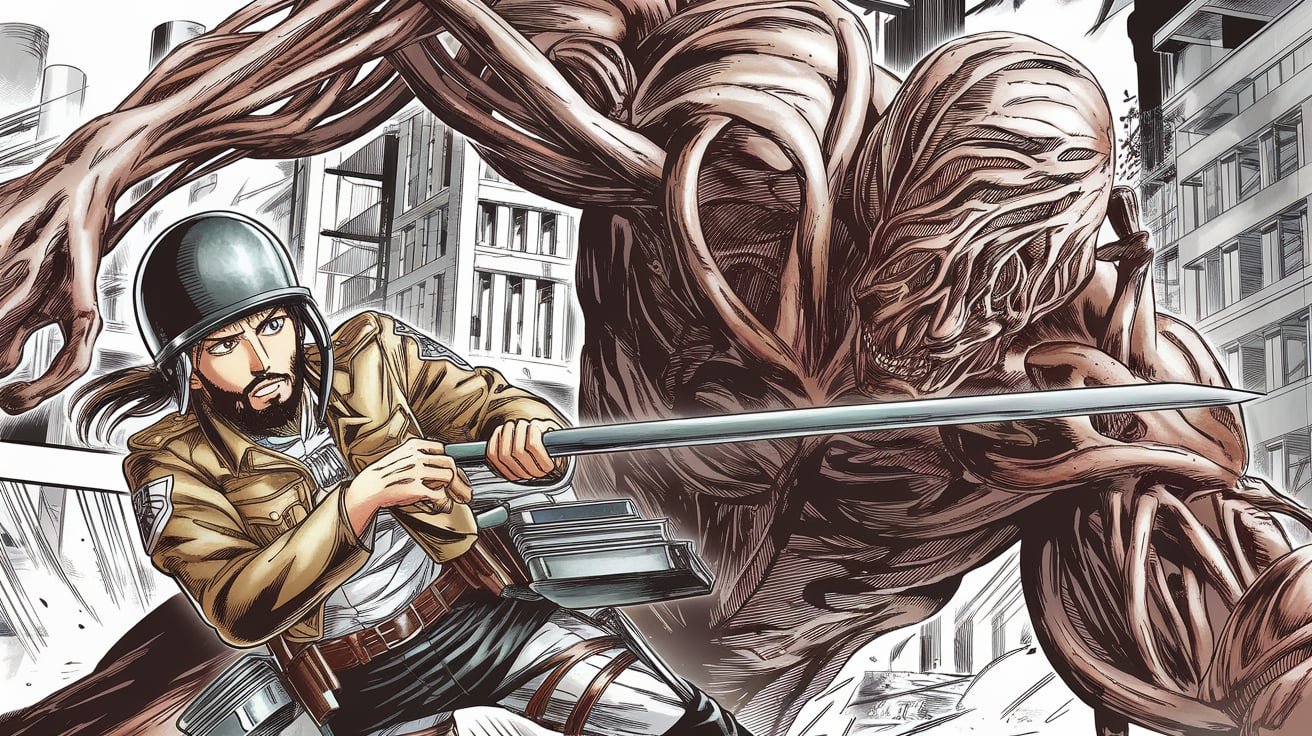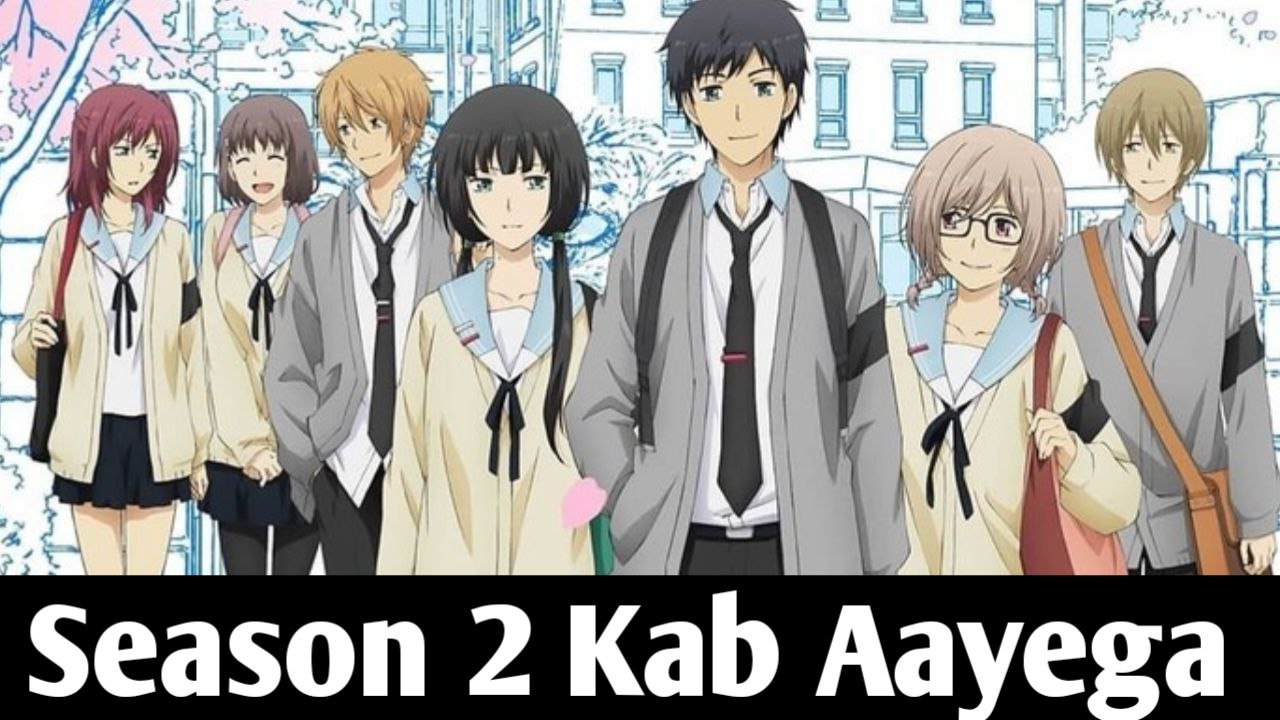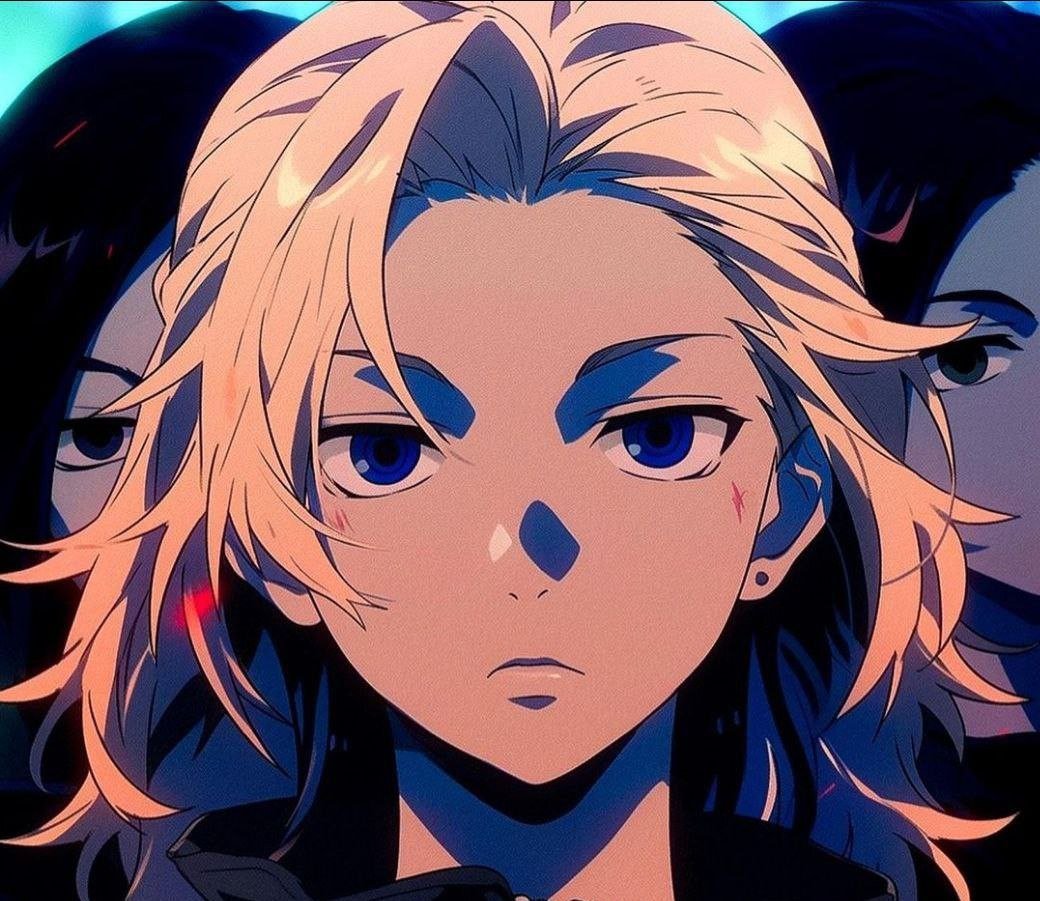Table of Attack on titan season 1
Introduction to Attack on titan season 1
Attack on Titan, originally created by Hajime Isayama, is a prominent manga series that garnered widespread acclaim since its launch in 2009. The narrative unfolds in a post-apocalyptic world where humanity is on the brink of extinction, besieged by gigantic humanoid creatures known as Titans. These towering beasts have driven humans to seek refuge within colossal walls, resulting in a harrowing scenario of fear and survival. The series’ initial manga run concluded in April 2021, while the highly anticipated anime adaptation commenced airing in 2013 and consistently attracted viewers until its final season in 2023.
The anime adaptation significantly contributed to the series’ popularity, bringing Isayama’s intricate storytelling and vivid artwork to life. The involvement of the studio Wit and later MAPPA allowed Attack on Titan to push the boundaries of animation quality, especially during key moments that depict intense battle scenes between the Titans and the human factions. Its unique blend of action, drama, and existential themes set it apart from other contemporary works in the genre. Notably, the characters’ motivations are deeply interwoven with the overarching narrative, reflecting themes of freedom, oppression, and sacrifice.
Key plot points revolve around the struggle for survival against the Titans, the mysteries surrounding their origin, and the moral dilemmas faced by the protagonists. Characters such as Eren Yeager, Mikasa Ackerman, and Armin Arlert take center stage in this gripping tale, each showcasing their growth and resilience throughout the episodes. Attack on Titan season 1 sets the tone for the unfolding intricacies of humanity’s plight, allowing viewers to become invested in both the personal journeys of the characters and the larger societal challenges they face. This multifaceted approach contributes significantly to the series’ legacy and its lasting impact on anime culture.
Plot Overview and Themes
“Attack on Titan,” particularly in its first season, presents a harrowing tale centered on Eren Yeager, a young man whose life is irrevocably altered following a catastrophic event involving the titans—gigantic humanoid creatures that threaten humanity’s very existence. The story begins in the walled city of Shiganshina, where Eren, along with his adoptive sister Mikasa Ackerman and their friend Armin Arlert, witnesses the tragic destruction unleashed by these titans. This pivotal moment not only sets the stage for Eren’s wrathful desire for revenge but also encapsulates the overarching theme of vengeance that permeates the series.
The journey of Eren Yeager grows increasingly complex as he learns about the world beyond the walls, plunging him deeper into the grim struggle for survival against the titans. The central conflict depicted in “Attack on Titan” is not solely physical but also psychological, as the characters wrestle with trauma stemming from the loss of loved ones and the horror present in their environment. This trauma is intricately tied to the series’ exploration of survival; each character must confront their own motivations and ideologies as they navigate a world riddled with fear and uncertainty.
Character evolution is a significant aspect of the narrative, showcasing how the harrowing events shape individuals’ perceptions and relationships. Eren’s transformation from a naïve boy to a determined fighter illustrates a profound personal journey. Additionally, the interpersonal dynamics between Eren, Mikasa, and Armin add depth to the story, emphasizing themes of friendship and loyalty amidst chaos. As the first season unfolds, viewers are invited to reflect on complex moral questions regarding freedom and sacrifice. This multifaceted storytelling is what makes “Attack on Titan” a resonant exploration of humanity’s fight for survival, making the first season a critical foundation for understanding the series’ impact and legacy.
Character Analysis
In examining the characters of Attack on Titan Season 1, it becomes evident that their motivations and growth serve as crucial elements of the narrative. At the forefront is Eren Yeager, the series’ determined protagonist. Eren’s desire to eradicate the Titans is fueled by personal tragedy, notably the horrific destruction of his hometown and the loss of his mother. This deep-seated motivation, while initially appearing straightforward, evolves throughout the series. Eren’s relentless pursuit of freedom leads him to question not only his own beliefs but also the very nature of humanity, making him a complex character whose journey appeals to many viewers.
Mikasa Ackerman, Eren’s adoptive sister, serves as both a protector and a warrior. Her character is defined by resilience and loyalty, which is often overshadowed by her traumatic past involving the loss of her family. Mikasa’s growth is closely intertwined with Eren’s actions; her fierce dedication to him highlights her internal struggles, making her an essential part of the story’s emotional core. Furthermore, her exceptional combat skills place her amongst the strongest characters, demonstrating that physical prowess in Attack on Titan Season 1 often goes hand-in-hand with psychological depth.
Armin Arlert, the trio’s strategist, offers a stark contrast to both Eren and Mikasa. His character arc showcases growth from insecurity to courage, providing an important perspective on intelligence as a weapon. Armin’s development epitomizes the theme of personal empowerment, proving that brains can rival brawn in the series’ combative world. Supporting characters, such as Captain Levi and Historia Reiss, further enrich this dynamic. Each character contributes uniquely to the overarching narrative, illustrating the complex relationships that drive the plot of Attack on Titan Season 1. Together, these character arcs create layered, interwoven stories that enhance the series’ impact.
Animation and Art Style
The animation and art style of Attack on Titan Season 1 play a crucial role in its storytelling, establishing a visually stunning atmosphere that captivates audiences. The distinctiveness of the series is primarily attributed to its meticulously crafted character designs and backgrounds, which enhance emotional engagement and contribute significantly to the viewer’s experience. The characters are rendered with attention to detail, each exhibiting unique traits that reflect their personality and roles within the narrative.
A defining feature of Attack on Titan Season 1 is its dynamic action sequences, particularly during titan battles. The animation team skillfully employs a combination of fluid movement and striking visuals to convey the raw power and agility of both the titans and the human characters. This is complemented by the innovative use of the vertical maneuvering equipment, allowing characters to traverse their environment with remarkable speed and precision. Through seamless transitions between close-up shots and wide-angle perspectives, the series creates a sense of scale that heightens the tension during confrontations.
When compared to other anime series, Attack on Titan Season 1 stands out for its darker and more realistic art style. While many anime opt for brighter palettes and stylized aesthetics, this series chooses a grimmer approach that aligns with its themes of survival and humanity’s struggle against overwhelming odds. This artistic choice reinforces the gravity of the narrative, making the viewer acutely aware of the stakes involved. Furthermore, the use of shadows and contrast adds depth to action scenes, enhancing the emotional intensity of vital moments.
Ultimately, the innovative animation and art style of Attack on Titan Season 1 not only set it apart from its peers but also significantly contribute to its enduring appeal. Through a combination of technical prowess and artistic vision, the series has solidified its place in the pantheon of influential anime.
Music and Sound Design
The auditory components of “Attack on Titan” play a crucial role in the series’ overall impact and effectiveness, significantly enhancing the viewer’s experience. Composer Hiroyuki Sawano is at the forefront of this sonic landscape, providing a dynamic and emotionally charged score that has become synonymous with the series. His ability to fuse orchestral and electronic elements creates a sound that is both grandiose and intimate, echoing the themes of struggle and perseverance present throughout the first season. The music not only underscored the action but also intertwined with character development, amplifying the emotional weight of key moments.
Throughout “Attack on Titan” season 1, Sawano’s compositions accompany pivotal scenes that define the series’ tone. For example, the score during intense battle sequences is marked by powerful orchestration and a driving rhythmic pulse, engendering a sense of urgency and danger. Conversely, more subdued melodies are employed during reflective moments, allowing viewers to connect on a deeper emotional level with the characters. This deliberate pairing of music and narrative serves to heighten the stakes and elicit a visceral response from the audience.
Another critical aspect of the sound design is the voice acting, which contributes significantly to the overall atmosphere. The original Japanese cast delivers performances that embody the emotional intensity of the characters, while the various dubbed versions bring unique interpretations to the roles. The careful casting in both original and dubbed formats ensures that the emotional resonance of “Attack on Titan” season 1 remains consistent across different languages, allowing a wider audience to engage with the story. The synthesis of Sawano’s music, carefully curated sound design, and impactful voice performances together create a cohesive auditory experience that enhances the overall narrative of the series.
Critical Reception and Accolades
Since its debut, Attack on Titan season 1 has garnered significant critical acclaim, establishing itself as a landmark series in the anime industry. The reception from both critics and audiences has consistently highlighted the show’s exceptional storytelling, intricate world-building, and deep character development. Reviewers have praised its ability to tackle complex themes such as freedom, oppression, and the moral ambiguities of survival, distinguishing it from many other series in the genre.
Many critics have noted the series’ stunning animation quality and the breathtaking artistry brought forth by Wit Studio, which enhanced the gripping action sequences and emotional moments throughout the first season of Attack on Titan. In particular, the series’ intense pacing and remarkable attention to detail have kept viewers engaged and invested in the characters’ struggles against the Titans. This exceptional production quality contributed to the show’s widespread popularity and acclaim.
Audience reactions have also been overwhelmingly positive, with fans lauding the series for its ability to evoke a range of emotions—from heart-pounding tension to heartbreaking loss. Online forums and social media platforms have played a significant role in the discussion surrounding the show, allowing viewers to connect through shared experiences and interpretations of the plot and characters. The overwhelming fan response has positioned Attack on Titan as a cultural phenomenon.
Over the years, the series has earned numerous accolades, solidifying its status within the anime community. Among its achievements, Attack on Titan season 1 received prestigious awards such as the Tokyo Anime Award and multiple nominations at the Crunchyroll Anime Awards. These accolades underscore the series’ profound impact and the high regard in which it is held by fans and industry professionals alike.
Global Popularity and Influence
Since its release, Attack on Titan Season 1 has garnered significant attention globally, contributing to the widespread popularity of anime outside of Japan. The series, based on Hajime Isayama’s manga, captivated viewers with its intense storytelling and profound themes such as freedom, survival, and the complexity of human nature. Its gripping narrative, in combination with stunning animation, has enabled it to resonate with a diverse audience across various cultures and demographics.
The show’s exploration of human struggle against overwhelming odds speaks to a universal experience, making it relatable for viewers from different backgrounds. As a result, Attack on Titan has drawn in audiences who may not have previously engaged with the genre, effectively expanding the anime community. This influx of new fans has led to increased interest in anime as a whole, prompting other series to gain traction in global markets.
Moreover, the impact of Attack on Titan Season 1 extends beyond its immediate audience; it has influenced the creation of subsequent anime series and inspired many creators. Elements from the show, including its intricate world-building and morally ambiguous characters, can be observed in several modern anime productions, showcasing its far-reaching legacy. Themes of conflict and the human condition that are portrayed in Attack on Titan have sparked discussions within the anime community, encouraging viewers to look beyond mere entertainment and engage with deeper philosophical questions.
The phenomenon of Attack on Titan serves as a testament to the potential for anime to cross cultural boundaries and ignite global discussions. Its unique blend of action, drama, and thought-provoking themes has solidified its place as a modern classic, and it continues to shape the landscape of anime for both audiences and creators alike.
Key Episodes and Highlights
Attack on Titan Season 1 introduces viewers to a world overshadowed by the threatening presence of giant humanoid creatures known as Titans. Among the pivotal episodes are “To You, in 2000 Years: The Fall of Shiganshina,” which serves as the catalyst for the entire series. This episode showcases the devastating breach of Wall Maria, setting the tone for the inevitable struggles faced by humanity. The shocking revelation of the Titans’ nature not only propels the narrative forward but also establishes the emotional stakes for the characters.
Another significant episode is “The First Battle: The Struggle for Trost (1).” In this installment, we witness the consequences of the breach as the military divisions face the Titans head-on. The intense action sequences paired with character development highlight the show’s thematic focus on fear, survival, and camaraderie. Viewers are introduced to Eren Yeager’s determination, culminating in his first transformation into a Titan — a watershed moment that alters the course of the storyline.
Furthermore, the episode titled “Live Die Repeat: The Struggle for Trost (2)” further enhances our understanding of character motivations. Here, Eren’s resolve to protect his friends is juxtaposed against an existential threat, showcasing the emotional burden carried by the protagonists. This episode emphasizes the balance between privilege and sacrifice, a recurring theme throughout Attack on Titan Season 1.
Lastly, “What Needs to Be Done Now” concludes the first season with significant revelations regarding the Titans and the complexities of human actions. The developing alliances and shifting loyalties exemplify the intricate narrative framework that keeps viewers engaged. The carefully constructed plotlines in these episodes demonstrate the series’ commitment to character depth and world-building, solidifying its status as a hallmark in anime storytelling.
Conclusion and Legacy
As Attack on Titan season 1 laid the groundwork for an expansive narrative, its legacy has grown significantly over the years, particularly following the series’ conclusion in 2023. The impact of this groundbreaking anime on the genre is palpable, as it has redefined storytelling conventions and set a new benchmark for character development and thematic depth within the medium. The blend of action, moral complexity, and societal critique has attracted a diverse audience, proving that anime can transcend traditional boundaries and appeal to a global fanbase.
One of the most significant contributions of Attack on Titan is its ability to tackle complex issues, such as freedom, survival, and the human condition, in a fantastical setting. The series’ exploration of these themes has resonated with viewers, prompting them to engage in deeper discussions about morality and human nature. This thematic richness sets Attack on Titan apart from other series, allowing it to leave a lasting imprint on the anime landscape. Additionally, the innovative storytelling techniques and visual mastery employed throughout the show have influenced both aspiring creators and established industry veterans alike, inspiring new works that strive to match its ambition and execution.
Looking toward the future, the legacy of Attack on Titan extends beyond mere nostalgia. Its iconic status raises questions about potential media adaptations, sequels, or spin-offs, and it is likely that the series will continue to thrive in various forms. The profound impact that Attack on Titan has had on anime as a medium will undoubtedly inspire future generations of storytellers. As fans reflect on the saga, the themes and narratives introduced in Attack on Titan season 1 will continue to echo throughout the fabric of modern anime, securing its place as a landmark series for years to come.






1 thought on “Exploring the Impact and Legacy of Attack on titan season 1”